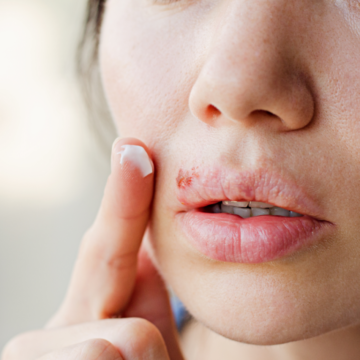Genital herpes is a very common kind of sexually transmitted infection – there are around 34,000 new cases in the UK each year. If you think you may have caught genital herpes, it’s useful to know what symptoms to look out for. So, what does genital herpes look like, and how you can tell if you’ve caught the infection?
What does herpes look like? Speak to a professional first
While it is possible to self-diagnose genital herpes, it’s always a smart idea to get yourself properly checked out by a medical professional. If you think you might have genital herpes, head to your local sexual health clinic or speak to your GP – they can do tests to confirm what kind of herpes you have.
Speaking to a medical professional is a good idea because:
- You might misdiagnose yourself – there are other conditions which have a somewhat similar appearance. You therefore want to be sure you definitely have herpes and not something else. A lab test is the most conclusive way to identify the issue.
- Herpes is not always visible – while you will normally experience symptoms of the illness within a couple of weeks of exposure, it can remain in your system for months, or even years without surfacing. So even if you think you’ve been exposed to the disease, there’s a chance wouldn’t know if you have the illness or not.
What does a herpes sore look like on someone else?
If you are worried that your partner may be carrying herpes it’s worthwhile raising your concerns directly with them (as sensitively as you can!). Below we describe some common visible signs of genital herpes. However, having an open, frank conversation with your partner is advised. You have the right to know if they have an STI as this could affect you.
In any case, making sure a condom is worn during sex will reduce the chances of herpes being passed on, whether your partner has herpes or not.
What does genital herpes look like? Telltale signs
If you, or someone you know, are worried that you might have genital herpes, the following might help you figure out if you have the condition. As we stressed above, if you are worried about your health, the first port of call should always be your GP or a sexual health clinic – the tips below are just intended as an overview.
Non-visible signs of herpes
An outbreak of genital herpes is normally preceded by a day or so of tingling or burning sensations around the affected area. You may also find it painful or difficult to pee – this condition particularly affects women who have herpes.
Other signs include swollen lymph nodes around the groin areas and flu-like symptoms, such as headaches and aching muscles.
What does genital herpes look like?
Genital herpes will usually appear as a pink or flesh-coloured wart. It may appear either raised, flat or in a kind of cauliflower-like shape. The warts or sores will often become full with a clear liquid and the skin eventually breaks. This liquid will ooze out to create a yellow-ish crust or scab. The herpes outbreak will normally clear up by itself after 7-10 days, although genital herpes treatments can treat breakouts faster and suppress the virus.
What does herpes look like on female genitals?
Women with genital herpes can develop sores inside and outside the vagina (those inside are difficult to see). Outside the vagina they may appear on the vulva (the outer part of the vagina), including on the outer lips. They will look like blisters or pimples and are filled with fluid. After a few days these will burst and a yellow crust will form as they heal.
Women are more likely than men to experience pain and a burning feeling when they pee during a genital herpes outbreak.
What does genital herpes look like on a man’s genitals?
Men with genital herpes tend to develop sores on the penis itself, although they may also appear around it. As with women, they will look like fluid-filled pimples or blisters which, after a few days, will break. A yellow crust will appear around them as they heal.
Men most often have sores outside the penis, although they can also appear in the urethra (the duct along which urine passes out of the body). This can make it painful to pee.
What does a herpes sore look like on the anus?
Men and women may also experience sores on their buttocks or around the anus. Using a mirror, you may notice open red wounds or pimples which look the same as those described for the penis and vagina.
Although genital herpes is most often visible on and around the genitals and anus, they can also manifest anywhere else on the skin – including around your mouth, eyes and on your fingers and hands.
Think you have genital herpes? Next steps
Self-diagnosis can be useful for understanding what seems to be happening to your body. Nevertheless, your first port of call should always be your GP or a sexual health clinic if you think you have genital herpes. They will be able to rule out other illnesses and give you advice on how to manage the conditions.
Once you have been diagnosed with genital herpes, you can start preparing for your next outbreaks. The good news is that, over time, outbreaks become less frequent and the symptoms less severe. What’s more there are various medicines which can make treating breakouts easier so that when they do happen, you’ll have them under control and cleared up fast.
If you have genital herpes, your options include:
- Aciclovir – a cost-effective treatment
- Valaciclovir – a highly effective outbreak and suppression treatment
- Famciclovir – another effective outbreak treatment
These medicines can help suppress outbreaks, and make outbreaks that do happen go away much faster.
Get in control of genital herpes
While genital herpes can be uncomfortable and frustrating, it is also a very manageable condition and most people with the illness lead completely normal lives. By learning what herpes look like and having the right treatments available as soon as you need them, you can get in control of herpes and carry on with your life.



